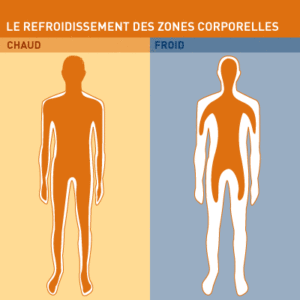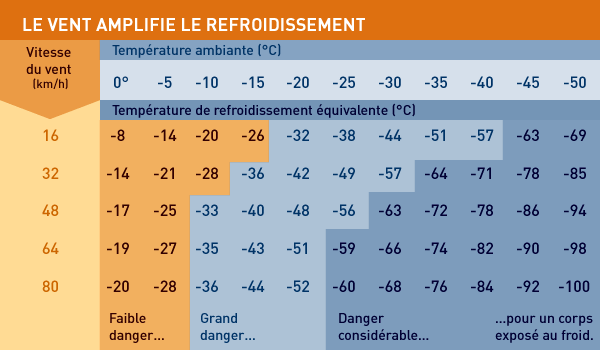
CONTENTS
ARCTIC ICE
- SEA ICE: MARINE ICE
- SATELLITES OBSERVE SEA ICE
- ICEBERGS: FRESHWATER ICE
- ICE: CLIMATE ARCHIVES
- GLACIATIONS AND LANDSCAPES
OCEAN AND MARINE LIFE
- THE ARCTIC AND OCEANIC CIRCULATION
- GENESIS OF THE ARCTIC OCEAN
- ARCTIC PLANKTON
- MARINE BIODIVERSITY AND FOOD WEB
- WHALES AND OTHER CETACEANS
- SEALS AND WALRUSES
TERRESTRIAL LIFE
- POLAR FLORA
- POLAR FAUNA
- THE POLAR BEAR
- ARCTIC BIRDS
- SPECIES EVOLUTION AND CLIMATE
HISTORY AND GEOGRAPHY
- GEOGRAPHY OF THE ARCTIC REGIONS
- GEOGRAPHIC NORTH POLE, MAGNETIC NORTH POLE
- WHO OWNS THE ARCTIC?
- THE EXPLORERS OF THE FAR NORTH
- THE INUIT
- OTHER PEOPLES OF THE FAR NORTH
- THE ARCTIC TODAY
 HUMANS, AN ANIMAL AT 37 °C
HUMANS, AN ANIMAL AT 37 °C
To live, humans must maintain an internal temperature close to 37°C. This is essential for the functioning of vital organs: heart, brain, lungs, liver, kidneys, etc. However, peripheral organs (skin, limbs…) can withstand excessive cold. But beware of frostbite (hands, feet) and internal cooling (hypothermia), which are very serious: the heart stops at 25°C!
A CENTRAL HEATING SYSTEM WITH A THERMOSTAT
The body can fight against cold. Certain skin cells detect a drop in external temperature; immediately, shivers and tremors release energy, and one instinctively curls up to prevent heat loss. The body can also decrease blood flow under the skin and increase heat production (thermoregulation).
Food also helps resist cold (fats, hot drinks…).

TO PROTECT ONESELF FROM THE COLD, ONE MUST… COVER UP!
Wind and humidity accentuate the effects of cold on the body, increasing heat loss. To protect oneself, the best insulator is warm, still air. Therefore, one must wear multiple layers of loose clothing and insulate oneself from the outside with a windbreaker; but without sweating to avoid humidity. Clothing must always be adapted to activities!
CAN THE BODY ADAPT TO COLD?
During his solo walk towards the Pole, Jean-Louis Etienne endured extreme cold for weeks. Upon his return, his body temperature could drop to 35.5°C at rest, without consequences: a new equilibrium that allowed for energy savings!


